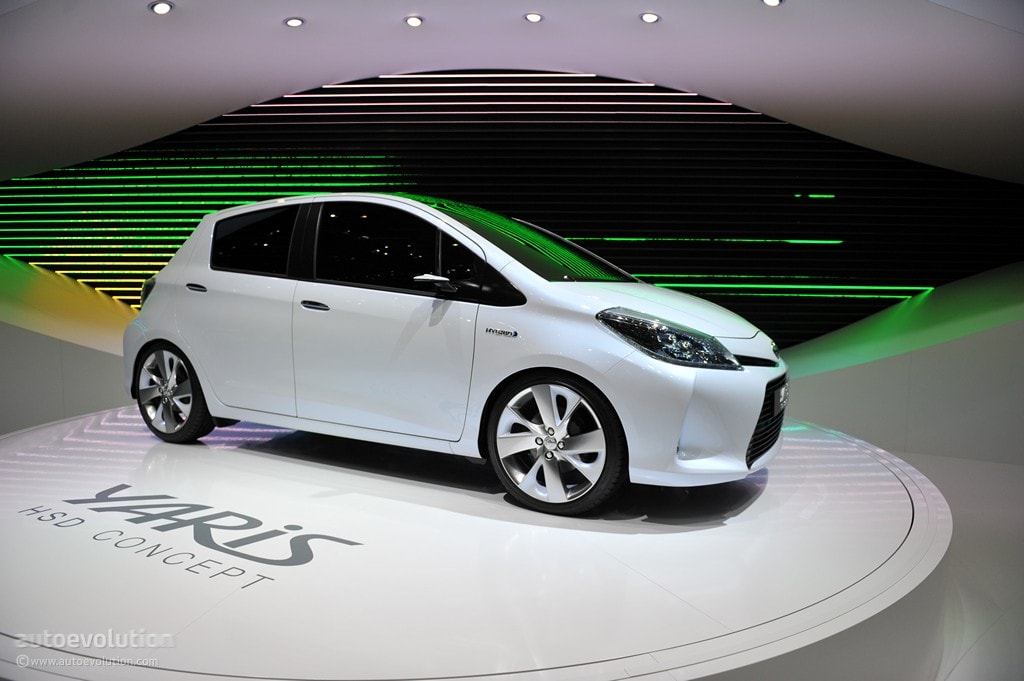Toyota has used this year’s Geneva Motor Show to introduce the Yaris HSD to the world, a concept that previews a future B-segment hybrid car. The Japanese carmaking giant believes that the market has matured enough to allow a such a small hybrid car to become mainstream.
The body of the concept features a lot of elements that identify the car as a Toyota full hybrid. For example, the flat, vertical aero corners of the front that minimize air turbulence and house front foglamps and matching rear reflectors. There is also an integrated rear spoiler, underbody covers and 18-inch aero wheels with enlarged gaps to promote cooling.
Exclusive to the Yaris HSD Concept is the white pearl paintwork with sparkling blue metallic accents created using multi-layering application techniques.
“The next step in Toyota’s roll-out of full hybrid versions of its complete model range in Europe, the Yaris HSD concept incorporates hybrid-specific styling cues and new, forward-looking design elements,” a company release reads.
The production model which will follow the concept will be launched throughout Europe during the second half of next year. According to the manufacturer, production will take place at Toyota Motor Manufacturing France’s Valenciennes plant.
The production version will feature Toyota’s Hybrid Synergy Drive, offering the benefit of fully electric driving capability, a function that is particularly effective in urban environments. Designed for low maintenance costs and “hard-wearing performance,” the system will have no starter motor or alternator, while the timing chain is maintenance-free and there are no drive belts, which improves reliability.
The body of the concept features a lot of elements that identify the car as a Toyota full hybrid. For example, the flat, vertical aero corners of the front that minimize air turbulence and house front foglamps and matching rear reflectors. There is also an integrated rear spoiler, underbody covers and 18-inch aero wheels with enlarged gaps to promote cooling.
Exclusive to the Yaris HSD Concept is the white pearl paintwork with sparkling blue metallic accents created using multi-layering application techniques.
“The next step in Toyota’s roll-out of full hybrid versions of its complete model range in Europe, the Yaris HSD concept incorporates hybrid-specific styling cues and new, forward-looking design elements,” a company release reads.
The production model which will follow the concept will be launched throughout Europe during the second half of next year. According to the manufacturer, production will take place at Toyota Motor Manufacturing France’s Valenciennes plant.
The production version will feature Toyota’s Hybrid Synergy Drive, offering the benefit of fully electric driving capability, a function that is particularly effective in urban environments. Designed for low maintenance costs and “hard-wearing performance,” the system will have no starter motor or alternator, while the timing chain is maintenance-free and there are no drive belts, which improves reliability.























